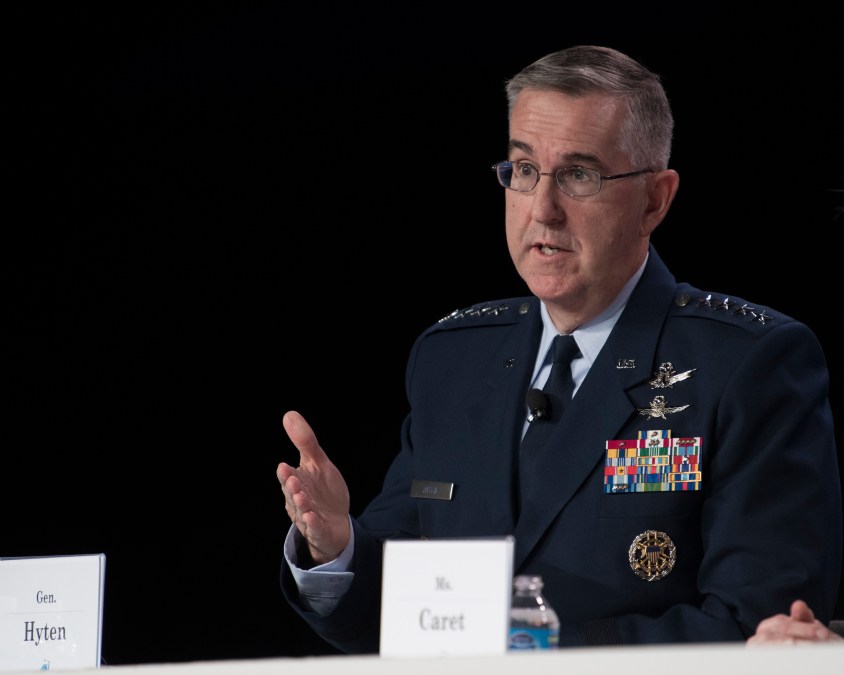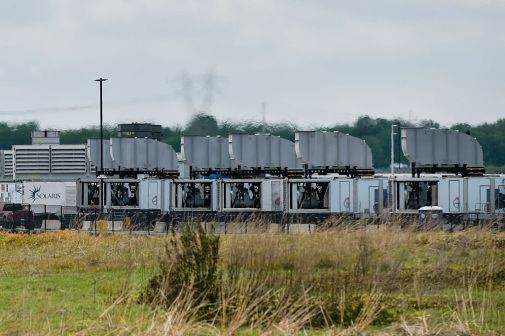Military-wide data requirements document coming soon, Joint Chiefs’ Hyten says

The nation’s No. 2 general said Wednesday that by the end of spring the military will get a “strategic directive” defining data requirements that will lay the foundation for how the Department of Defense will use data at scale.
The new document will define several technical requirements for networks and data standardization that will be used to implement a common data architecture across the force, said Gen. John Hyten, vice chairman of the Joint Chiefs of Staff. Developed by the Joint Requirements Oversight Council (JROC) which Hyten leads, the document will define data requirements for all the services with the hope of enabling the type of rapid data-sharing and processing needed to field modern concepts of operations and artificial intelligence-enabled warfare.
“We have a chance to actually stay ahead of our adversary…to dominate data,” Hyten said during the 5G Tech Summit hosted by AFCEA DC.
The “Information Advantage Strategic Directive,” as Hyten dubbed it, will be one of many critical documents coming out of the Joint Staff in the coming months that relate to Joint All Domain Command and Control (JADC2) — the overarching concept of operations where a military Internet of Things is born out of the ability to fuse data across the domains of military operations. The goal is to increase lethality by converging operations and fielding force-multiplying technologies like AI that will speed up decision making based on real-time data from the field.
“This is an unbelievingly challenging process,” Hyten said of creating the data standards and military-wide requirements needed to enable JADC2 operations.
On top of the technical challenges, Hyten said he hopes the guidance will help overcome cultural and security barriers to data sharing. Classification levels have stymied the military’s ability to widely share data. Stringent security practices have become muscle memory for some, even when working with less sensitive data that doesn’t need high levels of security.
The requirements will also take into account many of the technical challenges operators face in the field. Rural outposts with limited connectivity can’t send massive packets of data, bandwidth challenges that Hyten said were top of mind when thinking about the requirements for enterprise networks.
“If we push these huge packages of data with 5G…then at the edge what data do we push?” he said, referring to how new 5G networks the military is experimenting with could allow for much more data to be transferred. “That is an unbelievably complicated problem.”






